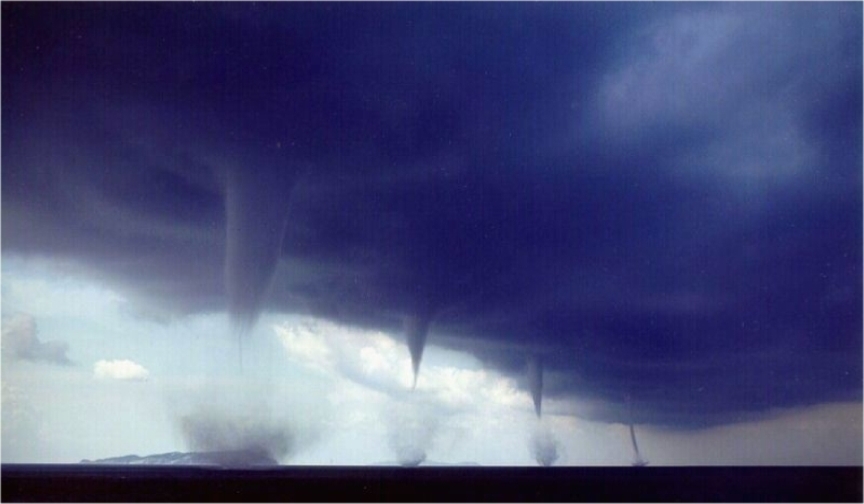When I first started writing this blog, I didn't really know how to write it and one of the suggestions made by one of the Geography Teachers was to watch the news and then write about that news story/footage in more detail. So, I thought I would give it a try..............
This footage was shot yesterday and was shown live on an Australian news channel. According to the reporter the scientific reason for the occurence of a waterspout is when there is a "bit of wind going around in circle" but I think there is slightly more to it than that.......
So, what excatly is a waterspout? Waterspouts are intense vortex funnels, which can sometimes be destructive, with a small width, that occur over water. Like dust devils and tornadoes, waterspouts are convective vortices whose circulations are driven by convection forming rising shafts of air. Proper waterspouts form over the water and will dissipate almost immediately upon touching any landmass. You can also get Tornadic waterspouts which are tornadoes which have been produced by severe thunderstorms and touch down onto or cross a body of water.
It is easiest to understand them by looking at a diagram:
1. Water temperatures have to be around 26/27 degrees Celcius
2. Rapidly rising warm air forms lines of towering cumulus clouds
3. Rotation, either clockwise or anit-clockwise, begins as air converges on the column of rising air
4. A dark spot, which is normally only visible from above, appears on the ater surface. This is the first sign of a waterspout developing
5. Surface winds of around 50mph can produce sea spray at the base of the waterspout
 Compared to tornadoes, waterspouts are less destructive as they are less well defined. They can pose a threat to infrastucture just off the shoreline or boats, as they have the power to overturn them, but, because they are slow moving and highly visible, boats are normally able to steer away from them and so any possible danger.
Compared to tornadoes, waterspouts are less destructive as they are less well defined. They can pose a threat to infrastucture just off the shoreline or boats, as they have the power to overturn them, but, because they are slow moving and highly visible, boats are normally able to steer away from them and so any possible danger. 

No comments:
Post a Comment